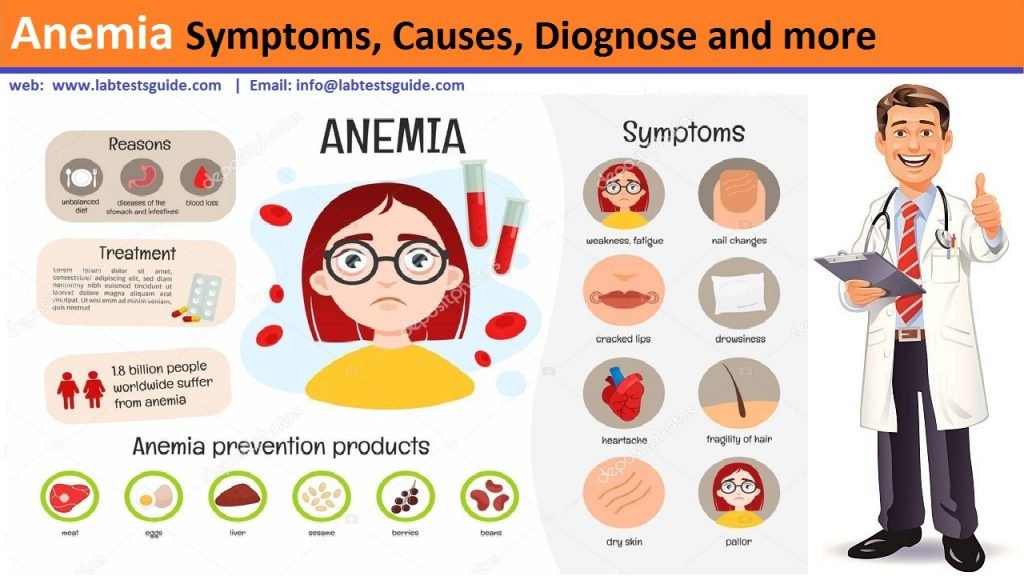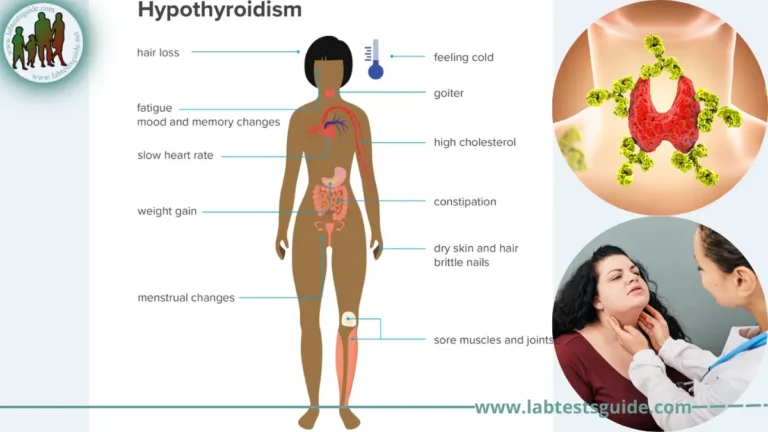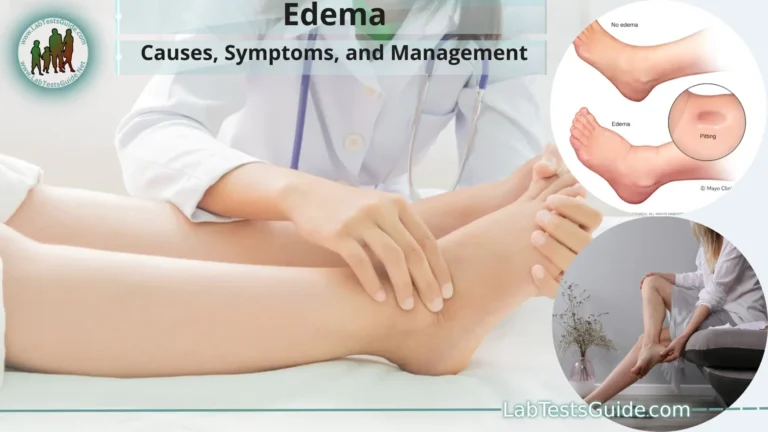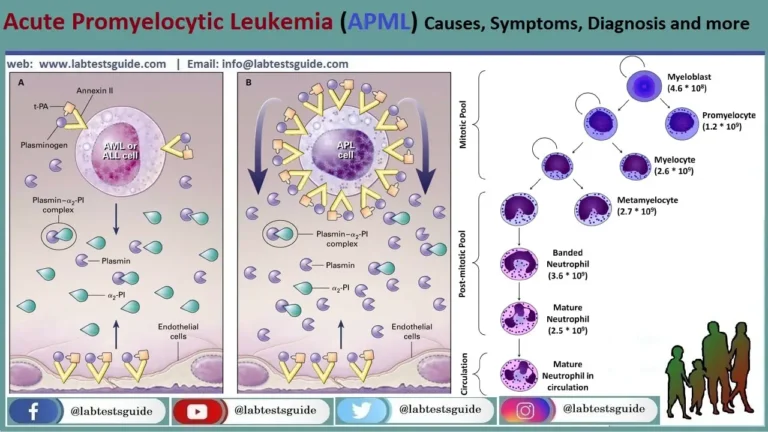Anemia is a condition that occurs when the amount of hemoglobin in a person’s blood drops below normal. A decrease in hemoglobin is often associated with a decrease in the number of red blood cells (RBCs) and hematocrit. Hemoglobin is contained within RBCs and is necessary to transport and deliver oxygen from the lungs to the rest of the body. Without a sufficient supply of oxygen, many tissues and organs throughout the body can be adversely affected. People with anemia may experience fatigue and weakness and may lack energy.

Types of Anemia :
Anemias can also be described based on the RBC size and concentration of hemoglobin in them. If cell size is much smaller than normal, it is known as microcytic anemia. If it is much bigger than normal, then it is macrocytic anemia. Likewise, if the concentration of hemoglobin is much lower than normal, it is hypochromic anemia; if the concentration is much higher than normal, the RBCs are called hyperchromic.
1. Iron Deficiency :
Discription : Deficiency of iron leads to decreased production of hemoglobin; low levels of hemoglobin in turn leads to production of smaller and hypochromic RBCs.
Causes : Blood loss; diet low in iron; poor absorption of iron
2. Pernicious Anemia and B Vitamin Deficiency :
Description: RBCs do not develop as they normally would because of a lack of B vitamins (B12 and folate); leads to decreased production of RBCs.
Causes : Lack of intrinsic factor (needed for B12 absorption); diet low in B vitamins; decreased absorption of B vitamins
3. Aplastic :
Description : Bone marrow is unable to produce enough blood cells; a life-threatening condition.
Causes : Cancer therapy, exposure to toxins, autoimmune disease, viral infections
4. Hemolytic :
Description : RBCs are destroyed faster than the bone marrow can replace them.
Causes : Inherited causes such as sickle cell disease and hereditary spherocytosis; other causes include transfusion of incompatible blood, autoimmune disease, certain drugs (penicillin)
5. Anemia of Chronic Diseases :
Description : Various conditions over the long term can cause decreased production of RBCs.
Causes : Kidney disease, rheumatoid arthritis, diabetes, tuberculosis, HIV, Crohn disease, cancer, and others
Sign and Symptoms :
Though different types of anemia have different causes, the signs and symptoms can be very similar. Mild or moderate forms of anemia may cause few, if any, symptoms. Some of the most common symptoms are:
- General feeling of tiredness or weakness (fatigue)
- Lack of energy
- Pale skin (pallor)
- Dizziness
- Headaches
Other signs and symptoms that may develop as the anemia becomes more severe include a feeling of cold or numbness in hands and/or feet, shortness of breath, fast or irregular heartbeat, and chest pain.
How to Diagnose Anemia :
A diagnosis of anemia begins with both your health history and your family health history, along with a physical exam.
A family history of certain types of anemia such as sickle cell anemia can be helpful. A history of exposure to toxic agents in the home or workplace might point to an environmental cause.
Laboratory tests are often what’s used to help doctors find out the cause of the anemia.
Tests to diagnose anemia include:
- Complete blood count (CBC). The CBC blood test shows the number and size of the red blood cells. It also shows if levels of other blood cells like white blood cells and platelets are normal.
- Serum iron levels. This blood test shows if iron deficiency is the cause of anemia.
- Ferritin test. This blood test analyzes iron stores.
- Vitamin B-12 test. This blood test shows vitamin B-12 levels and helps your doctor determine if they’re too low.
- Folic acid test. This blood test reveals if serum folate levels are low.
- Stool test for occult blood. This test applies a chemical to a stool specimen to see if blood is present. If the test is positive, it means that blood is being lost somewhere in the gastrointestinal tract, from the mouth to the rectum. Problems like stomach ulcers, ulcerative colitis, and colon cancer can cause blood in stool, which is why prescreening tests such as colon cancer screening are important for early diagnosis and immediate treatment.
Additional tests
Based on the results of these tests, doctors may order additional tests such as:
- an upper GI
- a barium enema
- chest X-rays
- a CT scan of your abdomen
How to treat anemia ?
Treating anemia depends on what’s causing it.
Anemia caused by inadequate amounts of dietary iron, vitamin B-12, and folate is treated with nutritional supplements. In some cases, injections of B-12 are needed as it isn’t absorbed properly from the digestive tract.
Your doctor and nutritionist can prescribe a diet that contains the proper amounts of vitamins, minerals, and other nutrients. A proper diet can help prevent this kind of anemia from recurring.
In some cases, if the anemia is severe, doctors use erythropoietin injections to increase red blood cell production in the bone marrow. If bleeding occurs or the hemoglobin level is very low, a blood transfusion may be necessary.
The Basic Anemia Panel includes the following tests:
- Hematocrit – The amount of red blood cells in the blood.
- Hemoglobin – A protein that transports oxygen or carbon dioxide in the blood.
- Mean corpuscular volume (MCV) – Measures the average volume of red blood cells in the blood.
- Mean corpuscular hemoglobin (MCH) – The amount of hemoglobin per red blood cell.
- Mean corpuscular hemoglobin concentration (MCHC) – The amount of hemoglobin concentrated in a given volume of red blood cells.
- Red cell distribution width (RDW) – Measures the difference of red blood cell size or volume in blood sample.
- Percentage and absolute differential counts – Measures the amounts of different white blood cell types within the blood.
- Platelet count (RBC) – Measures the amount of platelets (fragments and particles of cells) in the blood that are crucial for blood clotting.
- White blood cell count (WBC) – Measures the amounts of different white blood cell types within the blood.
- Iron – The iron blood test measures the amount of iron in the blood. Iron is a mineral that is needed by your body for the production of hemoglobin, energy, and maintaining proper muscle and organ function.
- Total iron-binding capacity (TIBC) – Is used to differentiate between anemia types and gives more iron statistics than the Iron test alone.
Possible References Used







2 Comments